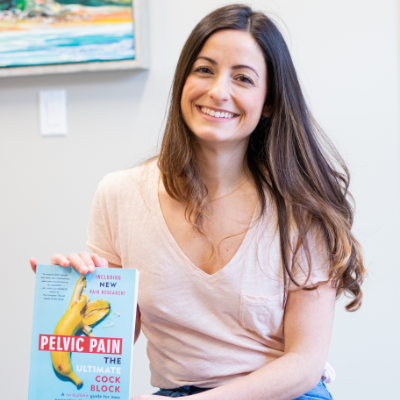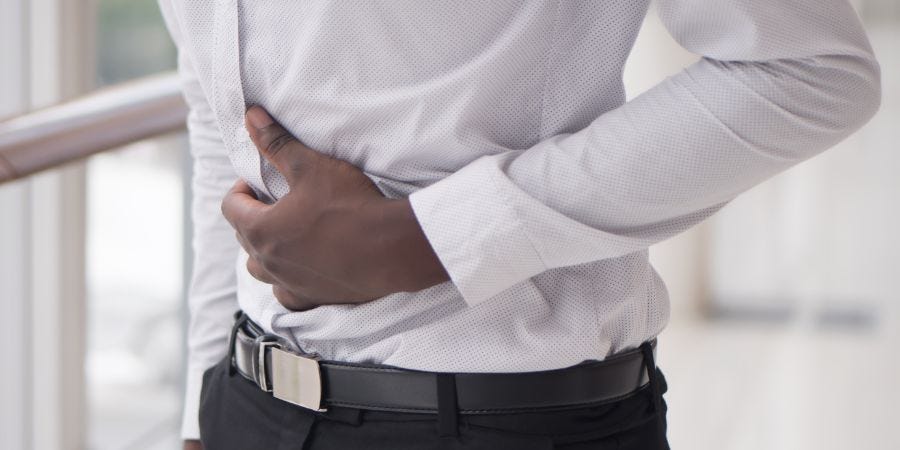Do you ever leak urine while running?
If so, you may be experiencing stress urinary incontinence (SUI). And it’s not uncommon— in a study of 112 elite female athletes, almost 46% said they leak while they run, cough, or sneeze. In other words, they had SUI.
While SUI can interrupt your workouts and other aspects of your life, many treatment options are available to help manage your symptoms.
Why You Pee When Running
To prevent the problem of peeing while running, we need to understand why leakage occurs in the first place.
Your bladder holds urine and contracts to push the urine out of your urethra. Your urinary sphincter stops your urine from coming out and helps the bladder empty when you need to void, almost like a door. When you urinate, your urinary sphincter relaxes to let urine flow out. But, if there is chronic extra pressure on your bladder— like the pressure that can occur when you run or sneeze— it can weaken your pelvic muscles.
Stress Incontinence
Check Your Eligibility
2 Easy Steps
Discover the continence care essentials available through your Medicaid plan.
Urinary incontinence is defined as a loss of bladder control (continence). Stress urinary incontinence (SUI) occurs when you have weak pelvic floor muscles, a weak urethra, or a weak urethral sphincter. When these parts of your urinary system are no longer strong enough to hold in urine, it can cause urine leakage.
Usually, you will experience leakage because you’re putting extra pressure on your pelvic floor muscles or bladder when you engage in certain activities. Physical activities, such as jumping, running, HIIT workouts, or lifting heavy objects, all put extra pressure on your pelvic muscles.
While these types of movements do not directly cause leakage, bladder leaks can occur during them if your pelvic floor muscle tissues are unable to adapt to the demands of the pressure. You may also experience leakage when sneezing or coughing.
About 1 in 3 women experience SUI at some point throughout their lives, and there are many reasons it can occur,the most common being the natural loss of maximal urethral closure pressure that comes with aging.
SUI can also occur after:
- Pregnancy
- Giving birth.
- Nerve injury.
- Changing of hormones during menstruation.
- Changing of hormones during menopause.
- Pelvic surgery.
Other types of incontinence women can experience are overactive bladder (OAB), urge incontinence, and overflow incontinence.
10 Tips to Stop Leaking While Running
Don’t let your leakage stop you from running or engaging in other physical activities. There are many ways you can manage your symptoms both while running and in your daily routine.
1. Use Incontinence Products
It may feel embarrassing when you first start looking into using incontinence products, but adult briefs, adult pull-ons, and female incontinence pads are an excellent way to wipe out anxieties about leaking at inconvenient times.
If you’re concerned about the cost of these products, fill out our secure qualify form to see if you’re eligible to receive free incontinence supplies from Aeroflow Urology. We can supply you with incontinence products that are discreet and comfortable, so bulky briefs on your runs won’t slow you down.
Getting supplies through Aeroflow Urology is convenient and easy. We have expert Continence Care Specialists who are available to answer any questions you may have when looking for the right incontinence products.
We’ll send you free supplies, a curated shopping list, and free, discreet delivery so you won’t have to take time away from your life to have high-quality continence care.
2. Plan Accordingly
Before heading out on the road or to the gym, prepare your body for exercise. Use the restroom to void your bladder, and make sure you empty it as much as you can without pushing.
You should also take extra incontinence products with you if you plan to be gone on a long-distance run. Put a bladder control pad in your gym bag or wear an ultra-absorbent adult pull-on so you won’t have to worry about changing into a dry product during your workout.
3. Practice Better Breathing
You may not realize it, but the way you breathe while running can affect your pelvic floor muscles. While breathing in, your pelvic floor muscles rest downward, and while breathing out, these muscles draw upward. Use your breath to optimize efficiency during high pressure situations, like breathing in and out during exertion. In addition, as you exhale, you can do a submaximal pelvic muscle contraction to support the activity demand further. Just make sure you let go on the inhale so you don’t induce pelvic muscle fatigue.
4. Don't Clench
If you clench your abdomen to stop leakage, you may be adding more pressure down through the pelvic cavity which will make the pressure demand load higher, which can be correlated with more bladder leaks. Your pelvic floor muscles are a part of your deep core, a muscle system that stabilizes you and supports and controls your urinary system.
5. Do Kegels
Pelvic floor exercises like Kegels can help improve your pelvic floor function over time by strengthening the muscles. Kegels are critical for regaining strength and bladder continence.
6. Watch Your Form
Every long-time runner knows form can affect your performance, and it’s no different when it comes to your pelvic floor muscles. Proper running form can help lessen the impact and pressure that occurs when you run, reducing the chance of bladder leaks.
Lean forward slightly when running to help support your urinary system. And remember to breathe.
7. Try Bladder Training
Bladder training can help improve your SUI symptoms by increasing the amount of time your body can hold urine. Bladder training consists of peeing on a set schedule to increase the periods between restroom uses.
To start bladder training, hold your urine for 5 minutes after you feel the urge to pee. Then, gradually increase the time by about 5 minutes. It may be uncomfortable at first, but eventually, you’ll make fewer trips to the bathroom and may improve your SUI. Try to void every 2-4 hours and don’t hold your pee for too long.


8. Hydrate-- But Not Too Much!
Hydration is crucial to proper urinary system health, so make sure you give your body enough water after a run or exercise. You should drink as much water as your body needs each day, or whenever you feel thirsty. Just make sure you don’t drink too much water before going for a run. This could increase your urge to urinate or cause more leakage.
9. Take It Easy
If you’re forcing yourself to run even when you’re completely exhausted, you may be experiencing muscular fatigue which may decrease continence control mechanism efficiency. Instead, give yourself a break and slowly increase the length of your runs over time.
10. Speak to a Professional
It’s been reported that 56% of women who experienced incontinence didn’t speak to their healthcare providers out of shame or embarrassment. SUI is common among women, but it isn’t normal, so you should plan with your provider to ease symptoms and regain pelvic floor strength.
How to Get Free Incontinence Supplies
If you’re ready to get back to your regular workout routine that’s uninterrupted by leakage, Aeroflow Urology can help. We supply incontinence supplies through Medicaid and some private insurance plans. To see if you qualify, follow our 3 simple steps.
- Fill out the qualify form.
- Speak to one of our Continence Care Specialists to find the products you want.
- Get free incontinence supplies delivered discreetly to your door every month.
Poświata, A., Socha, T., & Opara, J. (2014). Prevalence of Stress Urinary Incontinence in Elite Female Endurance Athletes. Journal of Human Kinetics, 44(1), 91–96. https://doi.org/10.2478/hukin-2014-0114
Stress Urinary Incontinence (SUI): Symptoms, Diagnosis & Treatment - Urology Care Foundation. (n.d.). Www.urologyhealth.org. https://www.urologyhealth.org/urology-a-z/s/stress-urinary-incontinence-(sui)
Information provided on the Aeroflow Urology blog is not intended as a substitute for medical advice or care from a healthcare professional. Aeroflow recommends consulting your healthcare provider if you are experiencing medical issues relating to incontinence.









